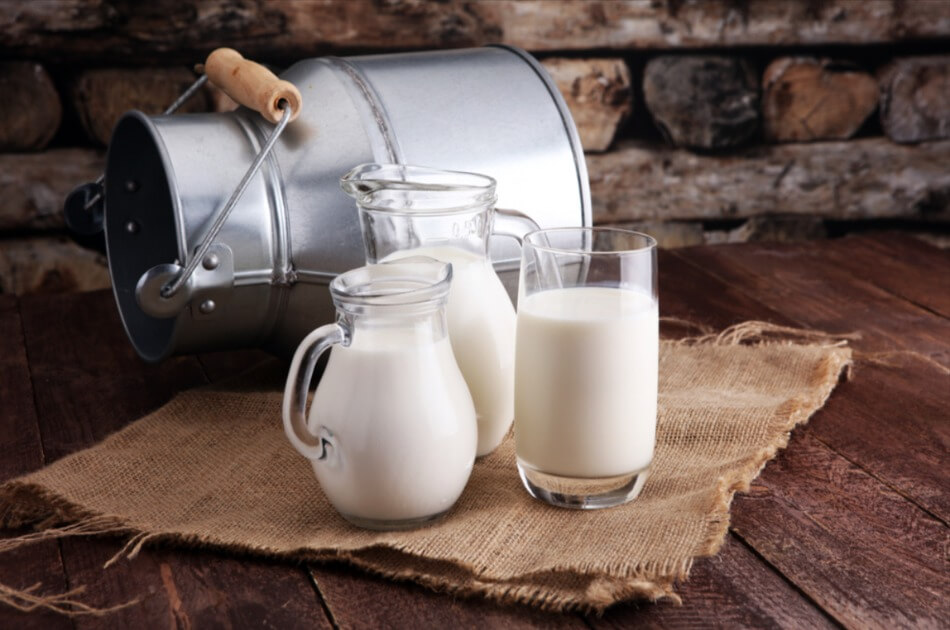Milk, with its essential nutrients and versatility, is a staple in many households.
But what if you find yourself with excess milk that you can’t consume before it spoils? Can you freeze milk to preserve its freshness and enjoy it later? In this blog post, we will explore the world of freezing milk, discussing the dos and don’ts to ensure your milk remains safe and delicious.
Let’s uncover the secrets to freezing milk without compromising its quality.
Can You Freeze Milk?
Yes, you can freeze milk to extend its shelf life. Freezing milk is a convenient option when you have more than you can consume within a few days. However, it’s important to follow the proper freezing and thawing techniques to maintain its taste and quality.
How to Freeze Milk
To freeze milk successfully, follow these simple steps:
Step 1: Choosing the Right Milk
It’s important to note that not all types of milk freeze equally well. Whole milk, 2% milk, and skim milk are the most suitable options for freezing. Cream, half-and-half, and milk alternatives like almond milk or soy milk may not freeze as successfully due to their different compositions.
Step 2: Preparing the Milk
Before freezing, make sure the milk is fresh and has not reached its expiration date. Give the milk a gentle shake to ensure it is well mixed. If you have a large container of milk, consider pouring it into smaller, freezer-safe containers to make thawing more convenient.
Step 3: Packaging the Milk
Choose freezer-safe containers or resealable plastic bags specifically designed for freezing. Leave some headspace in the containers or bags to allow for expansion as the milk freezes. Label the containers with the date of freezing to keep track of its freshness.
Step 4: Freezing the Milk
Place the containers of milk in the coldest part of your freezer, such as the back or bottom shelf. Avoid placing them near the freezer door, as temperature fluctuations can affect the quality of the milk. Ensure the containers are tightly sealed to prevent freezer burn.
Thawing Frozen Milk
When you’re ready to use your frozen milk, there are two recommended methods for thawing:
Method 1: Refrigerator Thawing
1. Remove the desired amount of frozen milk from the freezer.
2. Place the container in the refrigerator and allow it to thaw slowly overnight or for several hours.
3. Once thawed, gently shake or stir the milk to redistribute any separation that may have occurred during freezing.
Method 2: Cold Water Thawing
1. Fill a large bowl or sink with cold water.
2. Place the frozen milk container in the water, ensuring it is fully submerged.
3. Change the water every 30 minutes to maintain a cold temperature.
4. Thaw the milk until it reaches the desired consistency, gently shaking or stirring it once thawed.
Frequently Asked Questions
Can you freeze milk in its original container?
It is not recommended to freeze milk in its original container, as the liquid expands when frozen and may cause the container to burst. Transfer the milk to freezer-safe containers or resealable bags before freezing.
How long can you freeze milk?
Milk can be frozen for up to 3 months. However, for the best quality, it is recommended to use the frozen milk within 1-2 months.
Can you freeze milk that has been opened?
Yes, you can freeze opened milk. Follow the same steps of packaging and freezing as mentioned earlier. Ensure the container is tightly sealed to prevent any odors from affecting the milk.
Can you freeze milk for baking purposes?
Yes, you can freeze milk for baking purposes. Thawed milk may have a slightly different texture, so it is best used in recipes that require heating or mixing.
Conclusion
Freezing milk is a practical solution to extend its shelf life and reduce waste. By following the proper freezing and thawing techniques outlined in this article, you can enjoy the convenience of having milk on hand even when you have an excess supply.
Whether you choose to thaw it in the refrigerator or using the cold water method, your frozen milk can still provide the essential nutrients and creamy texture you desire. So, the next time you find yourself with surplus milk, don’t hesitate to freeze it and savor its freshness at your convenience.
Note: The freezing and thawing times mentioned in this article are approximate and may vary depending on the size and type of container used. Adjustments can be made accordingly.

Hi, I’m Julie, the passionate foodie and founder of Juliesfamilykitchen.com. I created this blog out of a drive to prove someone wrong, and then I realized how much I truly enjoy cooking and trying new recipes. In my free time, when I’m not running around after my kids or spending quality time with my partner, you can usually find me in the kitchen experimenting with new dishes.

